Pied-billed Grebes on the Fox River in downtown Waukesha Wisconsin. Pied-billed Grebes have been present for at least a month now, along with the Horned Grebes which have been around for the last couple of weeks. One of the highlights today was watching a Pied-billed eat a Sunfish that appeared to be bigger than the head of the grebe, but surprisingly it did get it down. Sometimes they can be seen along the river edges or pier areas hunting for prey. They are also just in the middle of the river when bikers and walkers are in higher numbers along the river walk. Some duck species still hanging around on the river there were Common Goldeneye, Redhead, Red-breasted Mergansers, Scaups, Ring-necked, Bufflehead and American Coots. It was a beautiful morning on the river with low winds, the warm sun and above freezing temps. I have also included a few Horned Grebe images from today’s event. Photographs were taken on April 5, 2014.
Pied-billed Grebe
Binomial name: Podilymbus podiceps
Category: Grebes
Size: 13” long, 16” wing span
Weight: 1 lb.
Habitat: Breeds across North America in ponds and lakes that are seasonal or permanent. On those waters it prefers thick stands of emergent vegetation, sloughs and bays. If waters are frozen the will go to salt water.
Diet: Diving for fish, occasional plant material, crustaceans (mainly crayfish), and aquatic insects. Their feathers are also part of their diet along with giving them to their young. Feathers help in digestion to prevent damage by bones.
Nesting: The nest is open bowl shaped made of vegetation, typically floats and is anchored by emergent vegetation. The female lays 3-10 light blue eggs, sometimes twice a year that both parents help incubate. The young are feed by both parents and are typically carried around on the adult backs.
Cool Facts: Small bird, stocky, short necked that dives up to 30 seconds at a time. They are known to dive for food with young on their back. Adults have a black ring around their chicken like bill during breeding season. A shy, not sociable bird that is sensitive to disturbances, are rarely found in flocks.
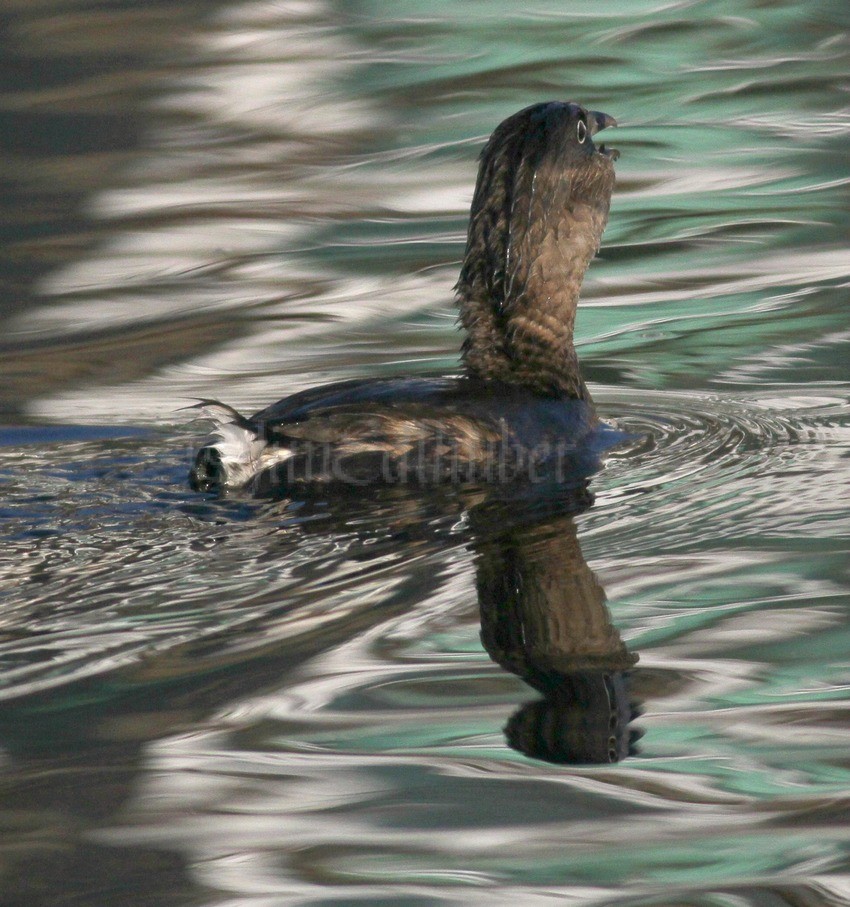
Back view of the Pied-billed Grebe just after taking down the fish. You can see the upper neck is slightly larger than the head of the grebe.

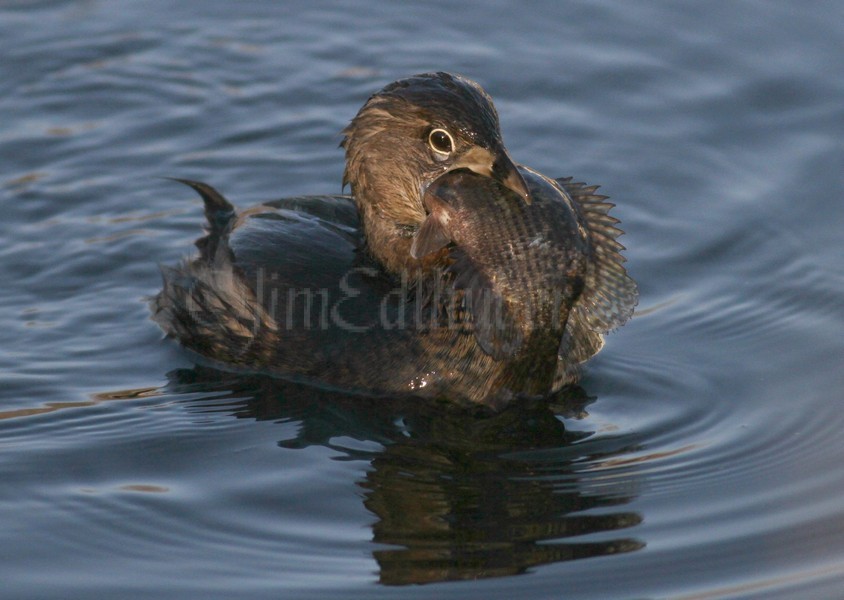
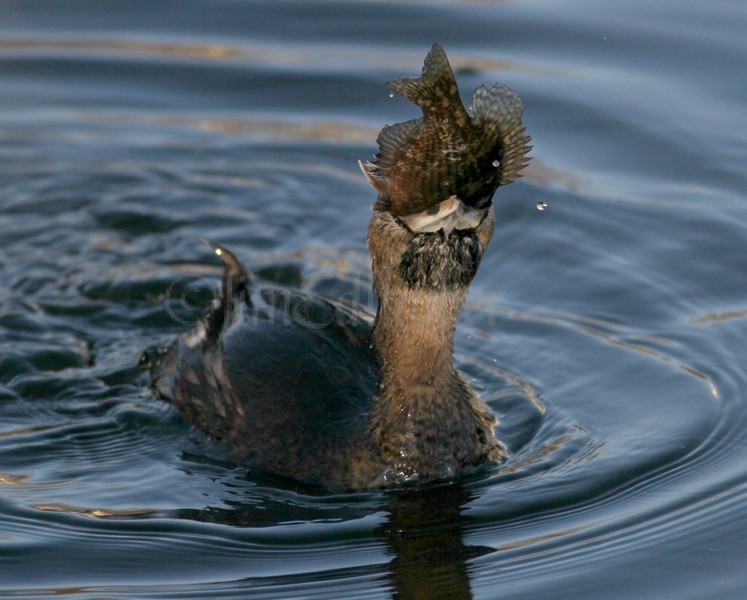
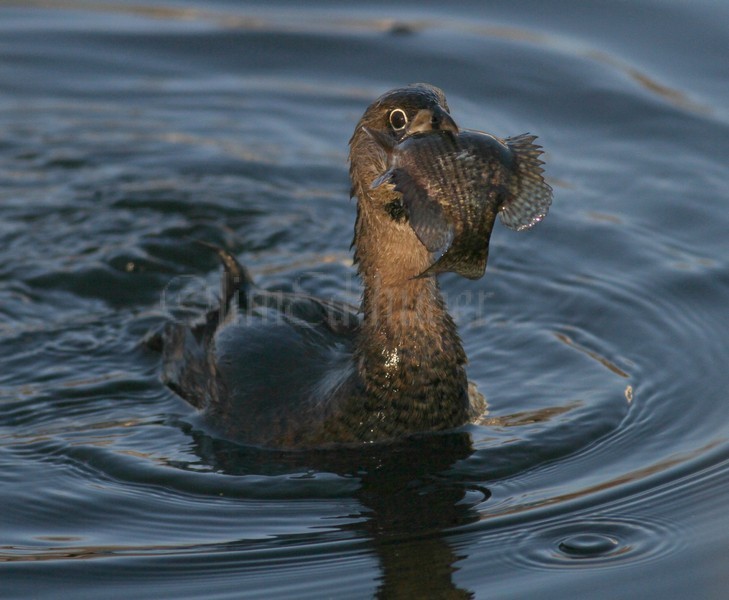
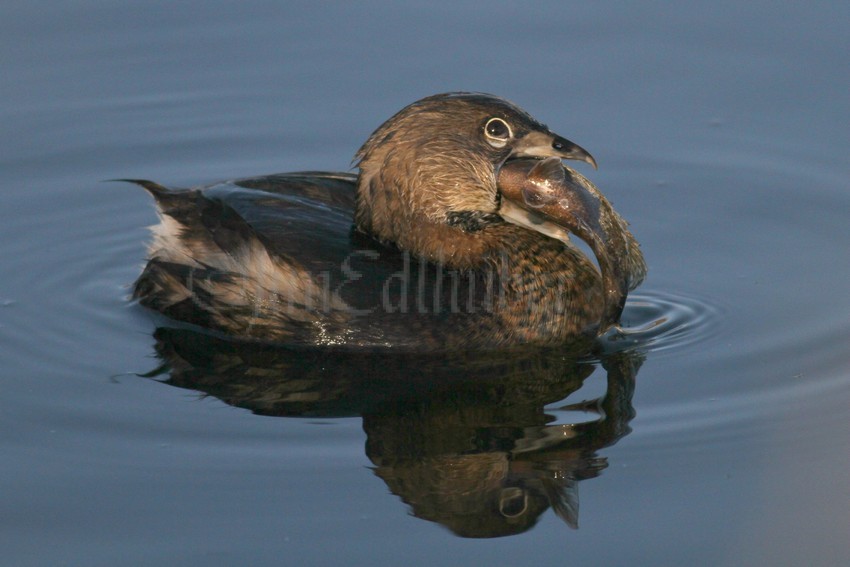
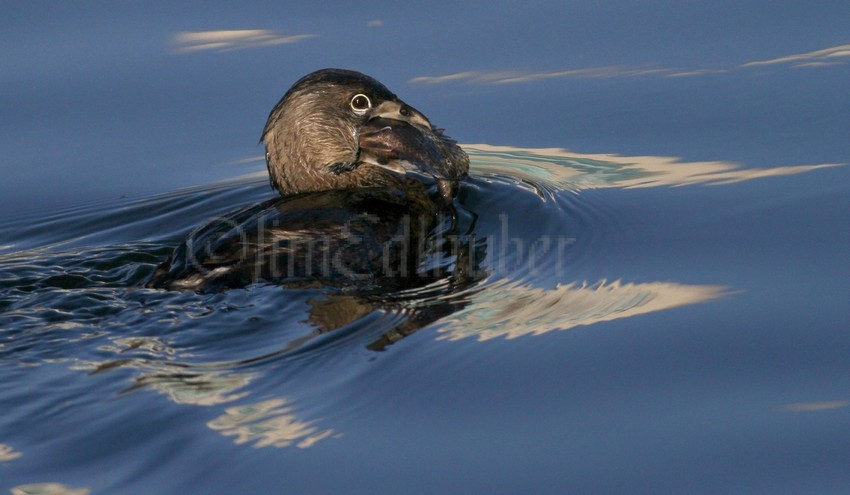
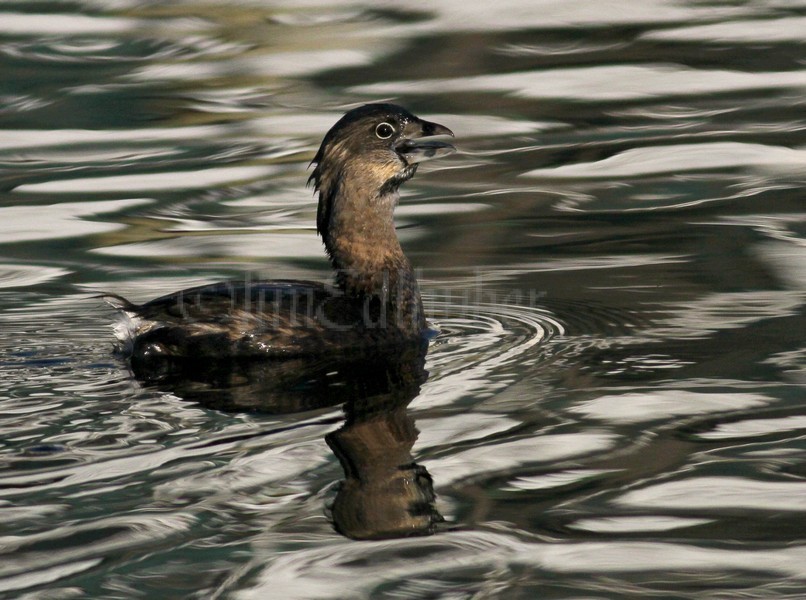
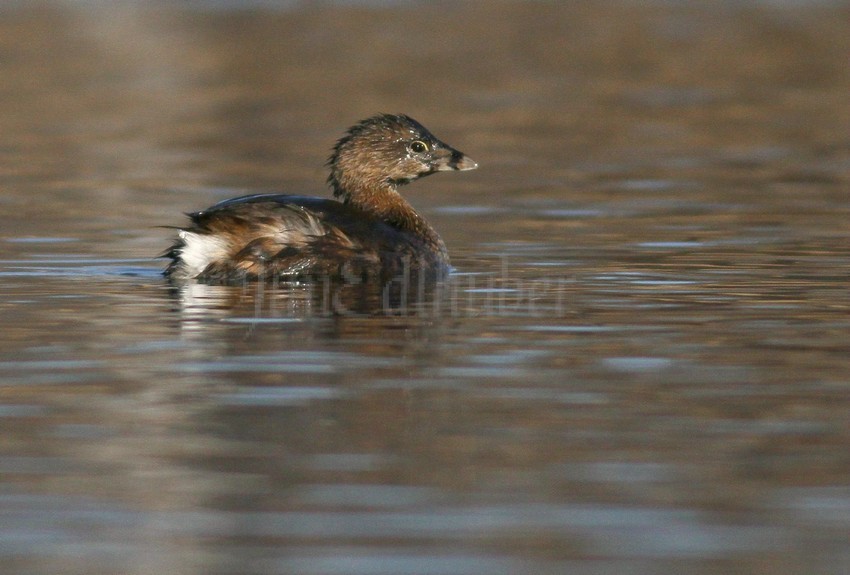
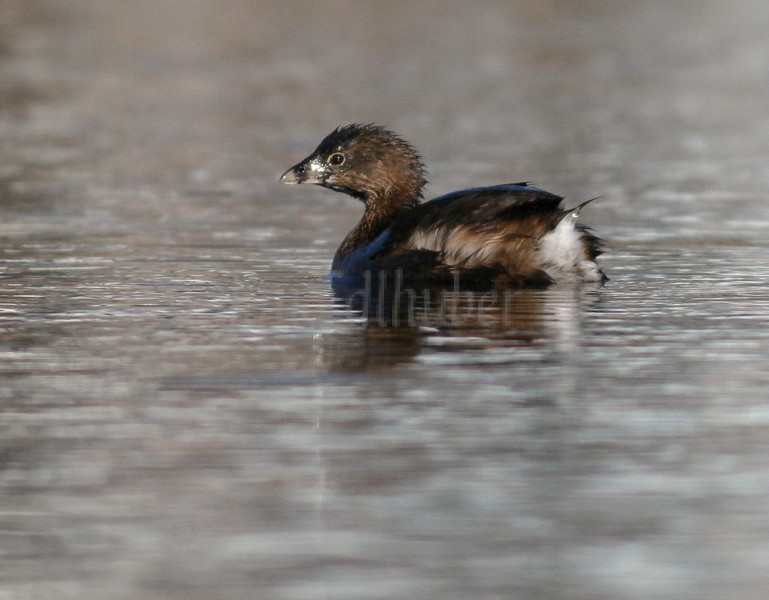
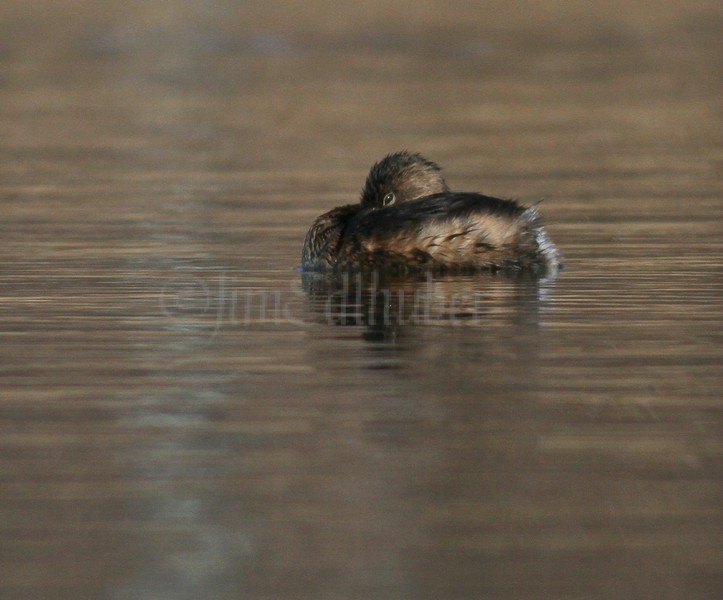
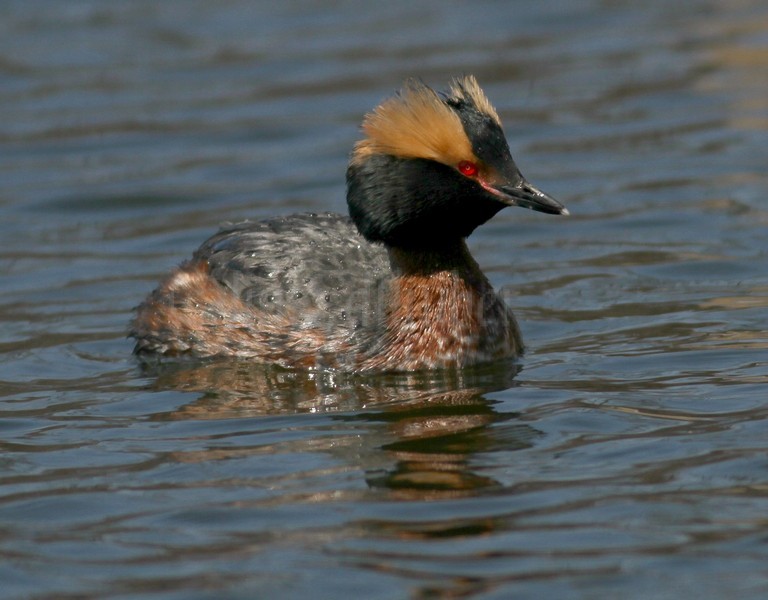
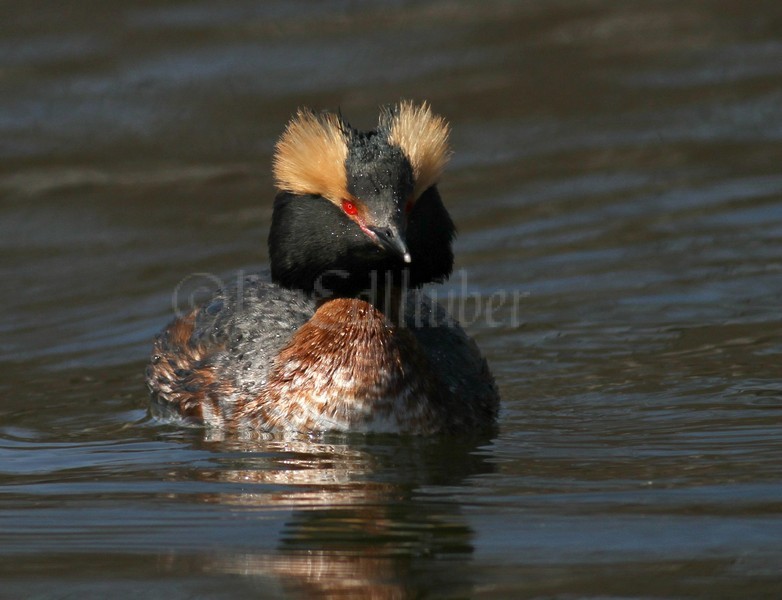
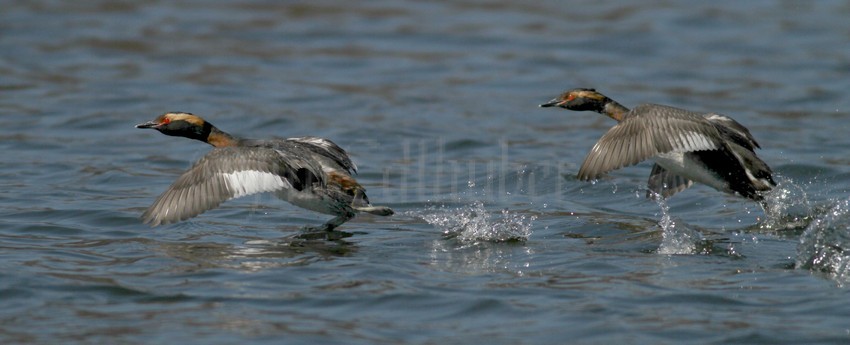
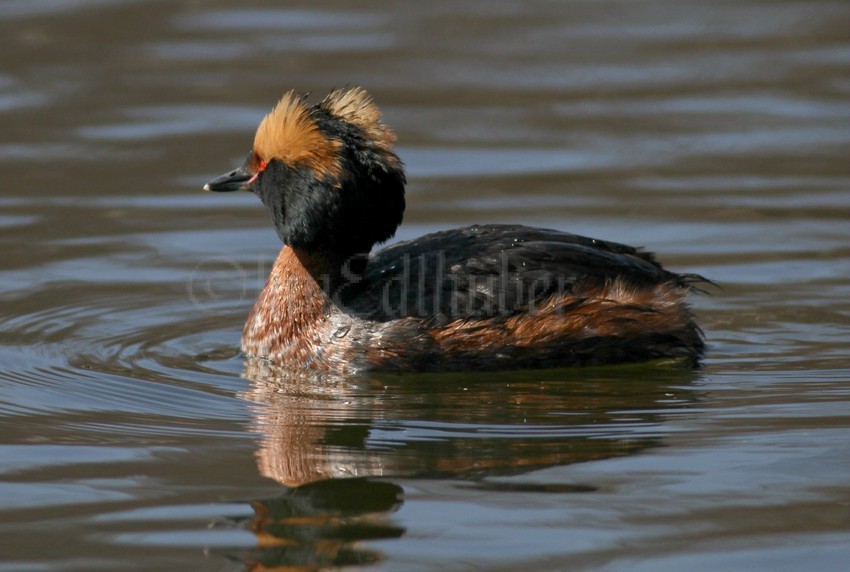
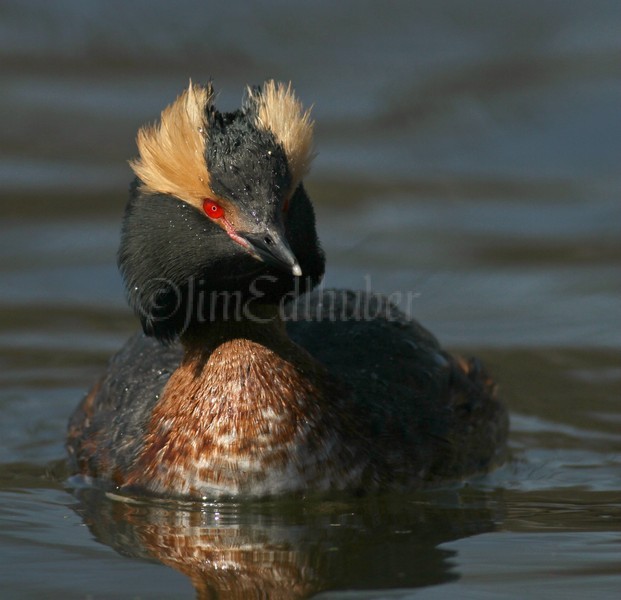
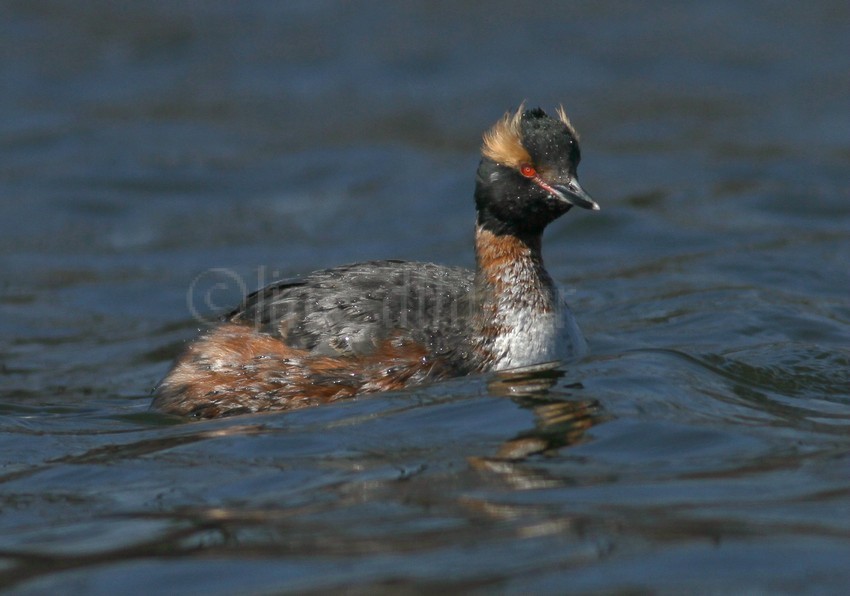








Shazam!!! This is an incredible series of nature being surprising and beautiful, Jim! Thanks for sharing with the rest of us!
Wonderful photos Jim! Amazing that Grebe could swallow that big fish!
Thanks for sharing, Hilary Ford